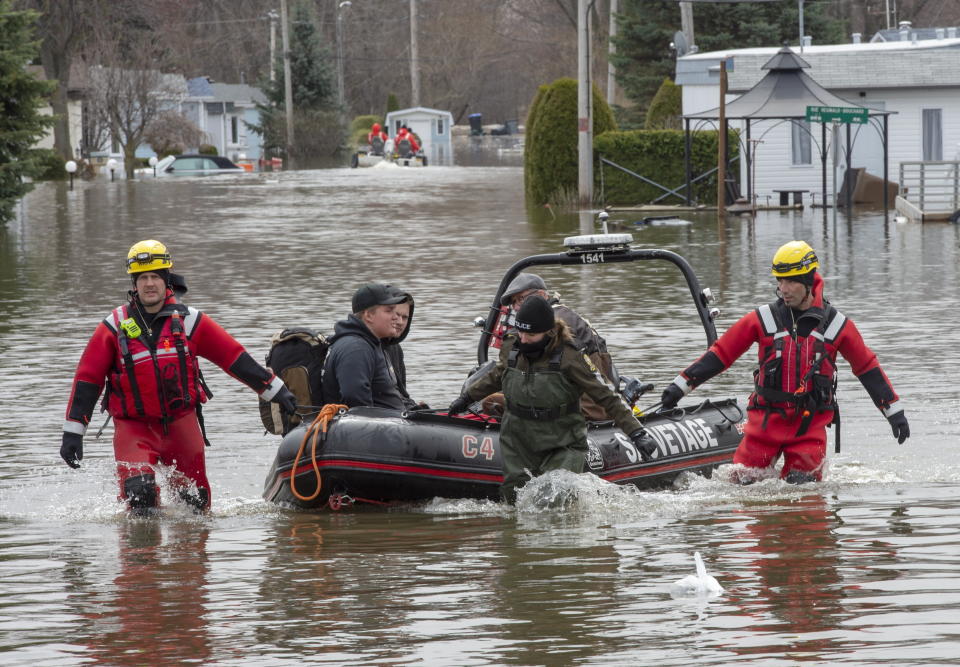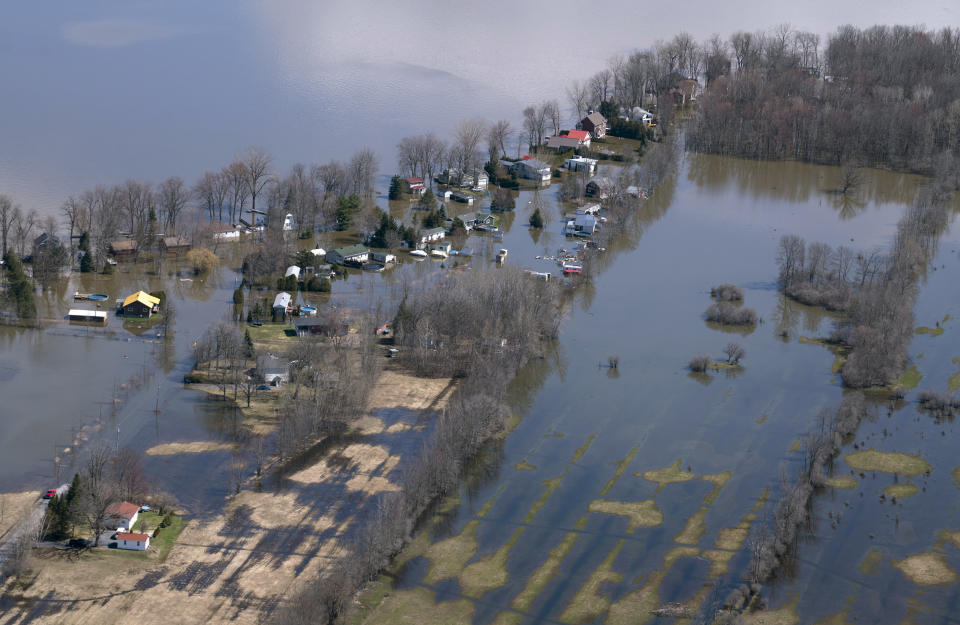Should you move if you live in a flood zone? How to protect your home and when to consider leaving
Flooding across three different provinces in Eastern Canada has left thousands of homeowners displaced, with many left to assess the damage of their destroyed properties.
But with experts pointing to climate change and urban development as factors for increased flooding, some homes may be at a more consistent risk than others.
Is moving permanently a more viable option than staying to battle future floods? One expert says Canadians should be thinking about flooding — whether they are in a high-risk zone or not.
Widespread flooding in Eastern Canada
In Ontario, more than 1,600 people have been forced from their homes. Bracebridge, Ont., and the Muskoka region have faced historic flooding and many have been unable to return to their properties. The Ottawa River has reached peak levels and thousands of soldiers have been deployed to wade off encroaching waters.
City officials in Ottawa said the River is already 30 cm above peak levels from flooding in 2017 and could continue to increase, based on how the weather goes in the next few days.
"The worst is yet to come," Ottawa Mayor Jim Watson said.
Near Montreal another 6,000 people have had to vacate the area. The Quebec government estimates about 10,000 people have evacuated in total, most of them from the town of Sainte-Marthe-sur-le-Lac.
In New Brunswick , the St. John River remains above flooding levels, but waters are set to recede near the end of the week. But the damage is already done as about 9,200 residences and cottages are flooded, and homeowners will have to return to slowly pick up the pieces.
Abandoning homes in flood zones?

For those who live in areas where widespread flooding is seen regularly, like close to a waterway that regularly rises beyond peak levels, relocating may be an option on many people’s minds.
Quebec’s premier François Legault said Sunday that it might be necessary to force those living in flood zones to move, so that taxpayers aren’t consistently forking out funding to rebuild.
Legault told reporters while visiting flooded Île-Bigras that it’s possible the government will purchase homes in flood zones.
“Now it’s twice in three years. So for sure there must be the impact of climate change and we have to adjust our programs,” he told reporters.
The next day at a flood zone in Gatineau, Quebec, Legault said the province would be willing to pay homeowners $200,000 to have them relocate.
Legault’s proposal to encourage homeowners to move may be a stance many Canadian premiers will adopt in the future, said Blair Feltmate, head of the Intact Centre on Climate Adaptation at the University of Waterloo.
And although $200,000 may seem low for a home that’s likely worth much more, the flood zone depreciates your home’s value, said Feltmate.
“What they thought was a home with a given value is now going to be repriced very rapidly,” he said. “Climate change is actually effecting the revaluation of property.”
For the five per cent of homeowners in Canada who live in a flood zone that is beyond help — meaning precautions and flood diversion programs won’t make an impact — moving may prevent years of headache down the road.
Bigger, more intense and frequent storms due to climate change is one of the main causes of the flooding, said Feltmate. But conditions on the ground also are a major impact.
“The loss of natural infrastructure, particularly in southern Canada, so forests, marshes, fields that could hold and absorb water...we've lost 73 per cent of that natural infrastructure,” he said, adding urban development is to blame for this.
When water hits paved areas and built-up suburbs that replaced forests or marshes, those areas don’t absorb water as effectively, he said.
With more intense rainfall events, Canadians aren’t prepared for the impact this kind of weather will have on homes, he said.
“None of this is appealing, but the reality is there is not an open purse to compensate people for the pre-flood perceived valuation. The governments don't have that money,” said Feltmate.
Flood solutions

Preemptive solutions that can be implemented before a flood strikes should be the priority of homeowners, and governments, he said.
According to the Intact Centre on Climate Adaption’s latest report, residential basement flooding is on the rise with a price tag of $43,000 per flood.
From 2016-2018, the Centre implemented an initiative called the Home Flood Protection Program, which informed homeowners about how to protect their property.
The report said they are many easy and inexpensive solutions homeowners can put in place that will greatly reduce the risk of their homes flooding, including cleaning out eavestroughs and installing window well covers.
For homes in high-risks flood zones, solutions that can be addressed by a contractor may be a moot point as houses will be prone to more severe flooding regardless.
“We know exactly how to take a huge proportion of risks out of the system, through the application of diversion channels....physical structures that can direct water to safe location, away from housing,” said Feltmate.
‘The weather system has changed’

Prime Minister Justin Trudeau told reporters on April 30 that extreme weather events will be happening more often, and climate resilient infrastructure will be needed to protect communities.
While Ontario Premier Doug Ford said while touring flooded Constance Bay that climate change was partially to blame for the flood, Ford’s government recently cut funding to flood management programs by 50 per cent.
Governments and homeowners will need to be more proactive for the next flood, whether that’s equipping your personal property for a flood, or reinforcing flood zone neighbourhoods with diversion channels before relocating entire communities.
The federal government will be producing new flood mapping for the 2019-2020 year that will better inform Canadians about where their properties are in relation to flooding, said Feltmate.
But just because you’re home isn’t in a direct flood zone, doesn’t mean you’re safe, he said.
“If you own a home somewhere where it rains, you are vulnerable to flooding, period,” he said. Feltmate pointed to the 2018 flood in Burlington that shocked residents.
“The weather system has changed due to climate change. Weather of the past isn't predictive of weather of the future,” he said, adding that if your neighbourhood has been dry for decades doesn’t mean it will never flood in the future.
Canada needs to start adapting to extreme weather risks, because it’s going to get worse, said Feltmate.
“[These floods]... they are not big compared to what's coming,” he said.


